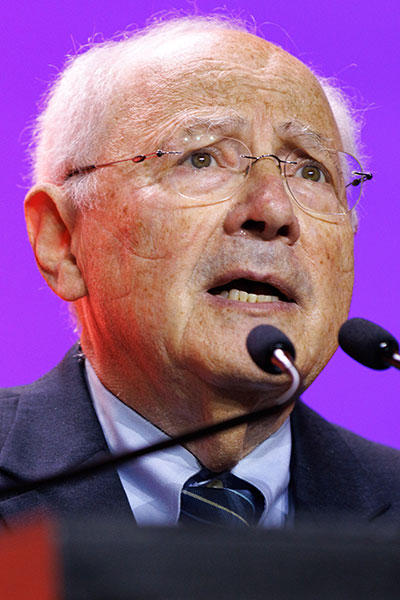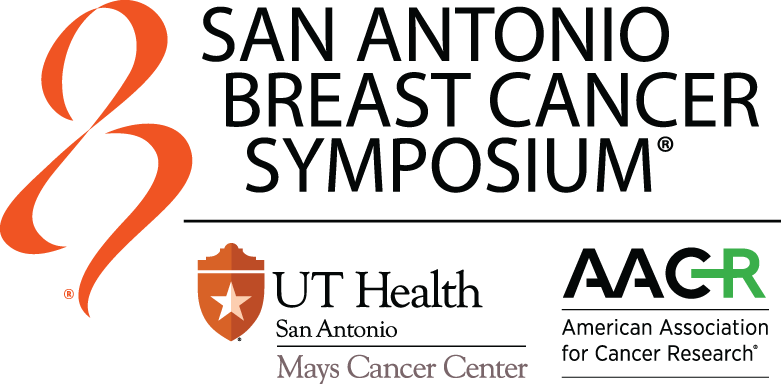
In recognition of his pioneering work in patient-focused breast conservation surgery, groundbreaking clinical trials and landmark genomic testing discovery, Norman Wolmark, MD, FACS, FRCSC, received the Susan G. Komen Brinker Award for Scientific Distinction in Clinical Research on Friday at SABCS 2022.
“I am thankful and humbled to be this year’s recipient,” Dr. Wolmark said. “Particularly when viewed from the standpoint that I will be joining a cohort of awe-inspiring individuals who have had an indelible contribution on scientific and clinical advancement in breast cancer.”
Dr. Wolmark’s lecture, The Contribution of NSABP Clinical Trials to the Management of Early Breast Cancer: PAST AS PROLOGUE, paid homage to the work of the National Surgical Adjuvant Breast and Bowel Project (NSABP), the collaborative research foundation for which he is the chairman. He also is a Professor of Surgery at UPMC Hillman Cancer Center/University of Pittsburgh and a principal investigator with NRG Oncology Pittsburgh.
He opened by pointing out that the work of the NSABP has been a part of the Brinker Award since the award’s inception. The first Brinker Award was given in 1992 to Bernard Fisher, MD, who preceded Dr. Wolmark as the chairman of the NSABP. In 2010, Soonmyung Paik, MD, received the award for his work with NSABP in developing Oncotype DX, a commercially available genomic test for estimating breast cancer risk of recurrence and the benefit from chemotherapy.
Other NSABP accomplishments Dr. Wolmark highlighted are its work toward retreating from radical mastectomy, and the first trial in 1975 on postoperative adjuvant chemotherapy, treating with tamoxifen in early breast cancer in 1981, and trastuzumab in early breast cancer in 2005.
Robust trials began in earnest after a pivotal NSABP trial, B-04, in 1971 that tested 1,079 patients with operable breast cancer who were clinically node negative. Patients received radical mastectomy (40% had histologically positive nodes), total mastectomy or total mastectomy with radiotherapy. They hypothesized, correctly, that even though they were leaving behind histologically positive nodes, the outcomes would be the same.
“These results convinced surgeons once and for all that nuances on operative themes were not going to enhance survival, and it opened the floodgates to systemic therapy,” Dr. Wolmark said.
Dr. Fisher stepped down from NSABP leadership in 1994 when the U.S. Committee on Organization and Commerce investigated it for falsified information. In the end, 6 patients out of 1,851 were found to have falsified data. Dr. Wolmark took over as chairman.
“If you were to ask, what is your most enduring contribution to the state of the art, it was rescuing NSABP during this period so we could go on to fight another battle,” he said.
And the NSABP has indeed gone on to undertake many more battles. Dr. Wolmark reviewed several more studies through the NSABP, including the development of Oncotype DX with the TAILORx and RxPONDER trials.
He offered thanks to the many investigators and others who have made his work possible, including the patients.
“There were 120,000 patients who selflessly, courageously participated in treatment trials of the NSABP,” Dr. Wolmark said. “If there are heroes in this story, it is these patients.”
The Brinker Award for Scientific Distinction in Clinical Research honors leading scientists who have made the most significant advances in breast cancer research and medicine.
On-Demand Session Availability
Daily sessions will be available for on-demand viewing 3-5 days following the 2022 Symposium (author permitting). They will be available exclusively to registered SABCS attendees until March 2023. Following March 2023, they will be available on SABCS.org under the “Resources” tab.

